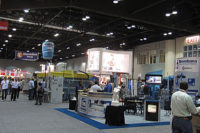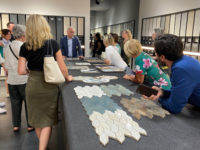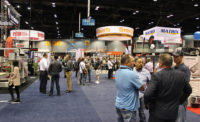The 2013 International Design winners are:
Project: Children Education Center & Children Innovation Center
Tile Manufacturer: Natucer
Project Location: Paterna, Spain
The Children Education Center & Children Innovation Center building in Paterna, Spain, seeks a relationship with the children, integrating architecture as an emotional component to their education. It is used as a Day Care Center for employees' children, and to increase outreach activities to encourage cultural awareness from childhood.
The idea is to generate spaces and opportunities for creativity. The building encourages a transmission of sensations from both inside and out, creating different spaces that encourage exploration.
The colors and materials are key players in the project. Rounded shapes invite exploration, encouraging nearness without the danger of roughness or sharp ends, being children safety first and foremost.
The buildings are made of cylindrical blocks and colorful facades provided by ceramic tile. Each block comes in a different color with four shades, changing hues depending on natural reflection and ambience light.
Covering is provided by custom porcelain ceramic tiles made by Natucer in straight pieces measuring 5.3 x 21.6 inches and curved pieces measuring 5.3 inches with a curvature of 33.5 inches to allow for inside and outside curve which are attached to tracks with aluminum staples in slots in the tiles which are made "in situ." The tracks are placed by a sandwiched panel of aluminum and mineral wool supported by a metallic substructure.
In order to be able to give the adequate curvature needed for the tiles in this project, the ceramic glazed porcelain is obtained by single-fire baking at 1195ºC, in carefully monitored cycles. The glazes used are for high temperature and have been colored with dispersible pigments in order to obtain the desired hues and colors, giving each piece greater depth.
Project: University Teacher Training College
Designer: Ramón Fernández-Alonso y Asociados
Tile Manufacturer: Ceramica Decorativa
Project Location: Granada, Spain
The University Teacher Training College in Granada, Spain, is designed on five levels, two of which are below ground for use as car parking, and three above ground that contain the college, and is divided into six areas:
- Common areas on the ground floor, consisting of entrance halls, a cafeteria, library, auditorium, gym, supermarket-store and a chapel
- A teaching area on the first floor and part of the second, containing the lecture halls and seminar rooms for students
- A departmental area, with offices, meeting areas and consultation rooms for teaching staff
- An administrative and secretarial area on the ground floor
- Basement parking with 154 spaces
- A church with a separate entrance from the exterior.
The project is based on the idea of providing an intimate, almost familiar architecture in the design of its spaces and the use of light and texture provided by its ceramic skin.
From the outset, the physical nature of the building has been closely linked with the principles underlying its design. The ground floor with its entrances and meeting points is designed as a threshold, enclosed by the upper floors of the building. The focal point of the design of this building is the ceramic envelope of its lecture halls, which rises over the city. This basic idea has taken shape in the structural solution used for the project: roof trusses containing the two upper floors with their lecture halls and departments, supported by two rows of supports with a large span, under which are the common areas connected to outdoor terraces with gardens, protected by a large projecting structure.
The envelope designed for the building is an efficient wall that increases its passive energy efficiency, thanks to the 9-cm-thick (3.5 inches) tiles used. The enclosing wall consists of the following elements: ceramic tile (90 mm) + air gap (100 mm) + grooved galvanized steel plate with high-density polyurethane foam on its outer face (70 mm) + acoustic insulation, Rockwool (50 mm) + double plasterboard partition wall.






